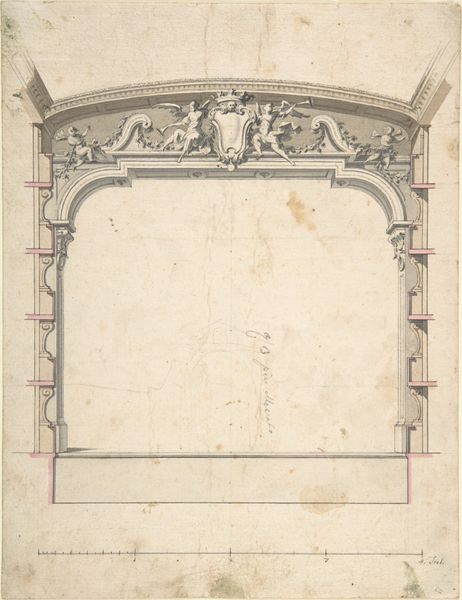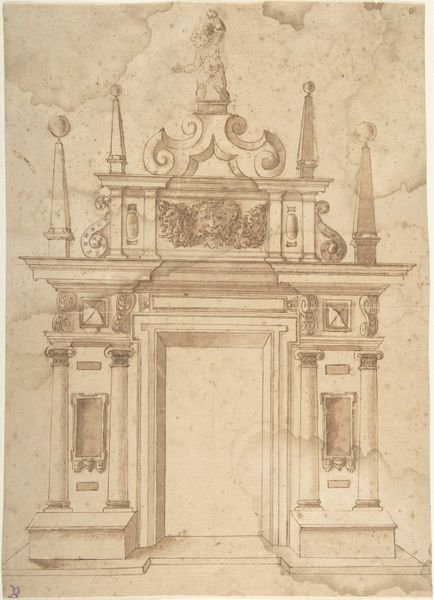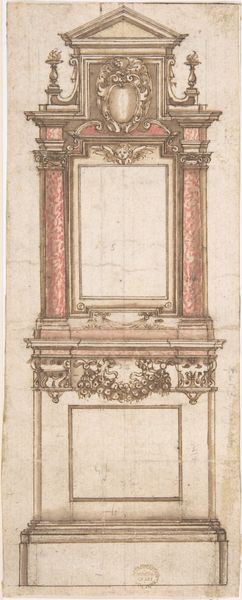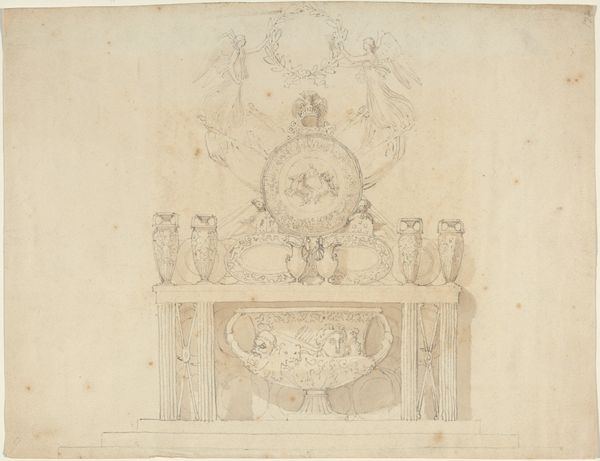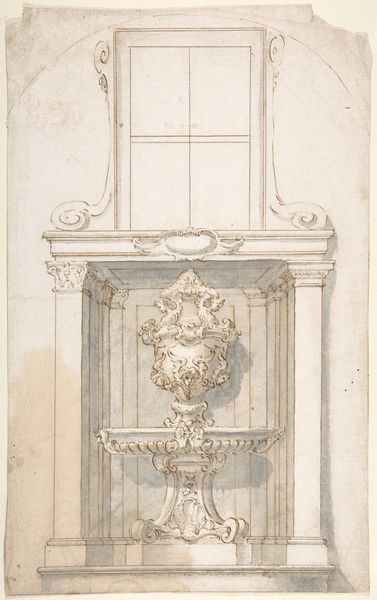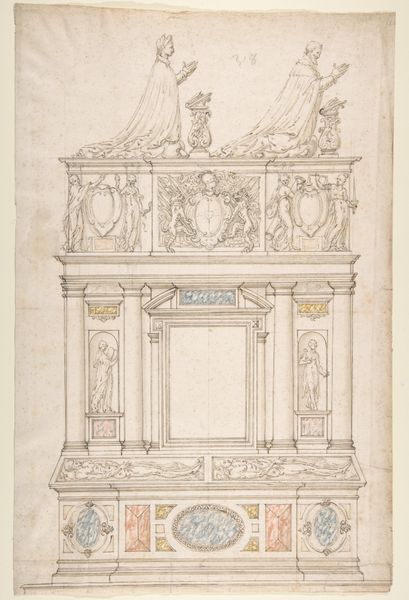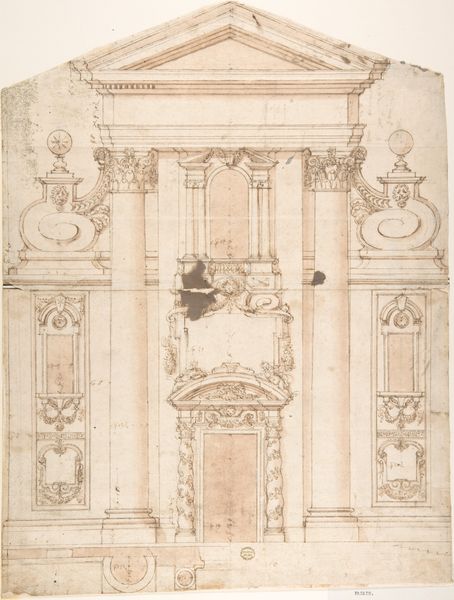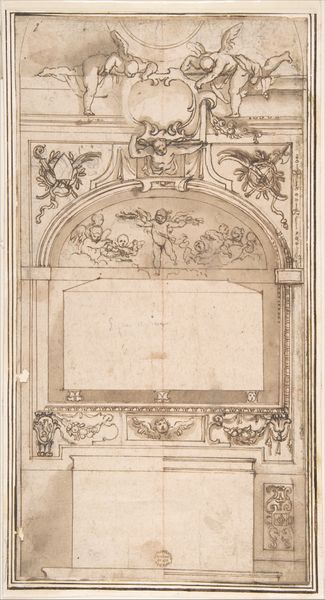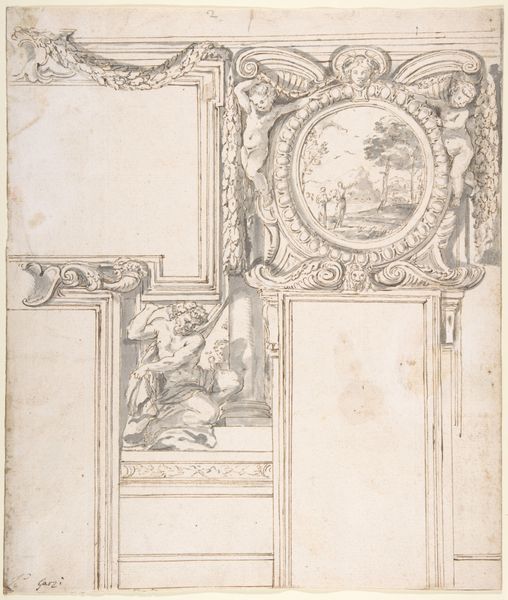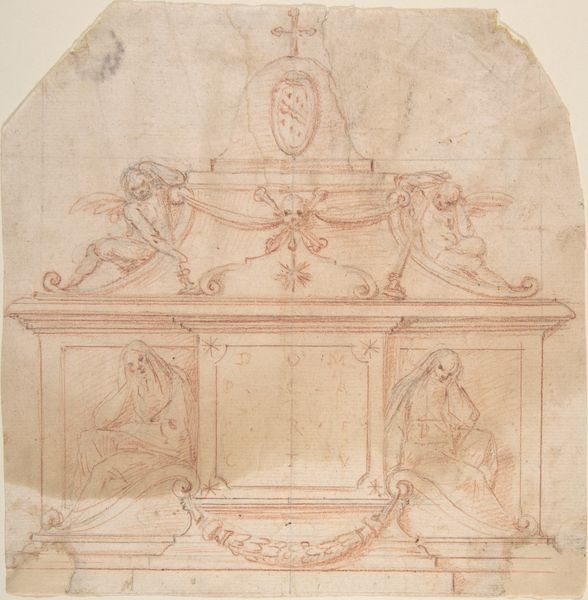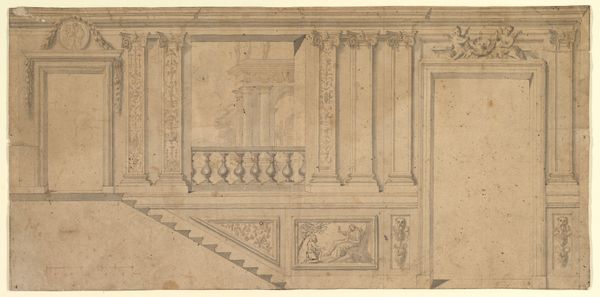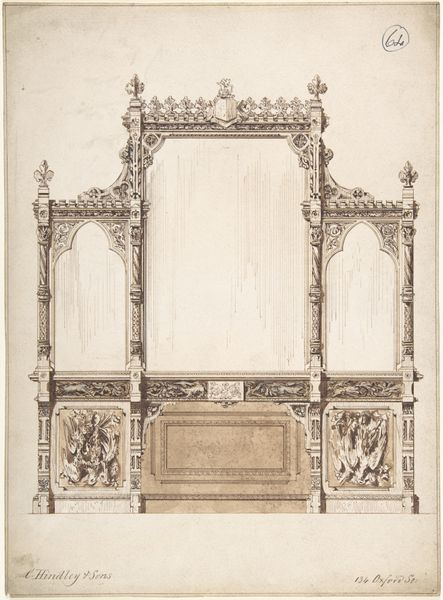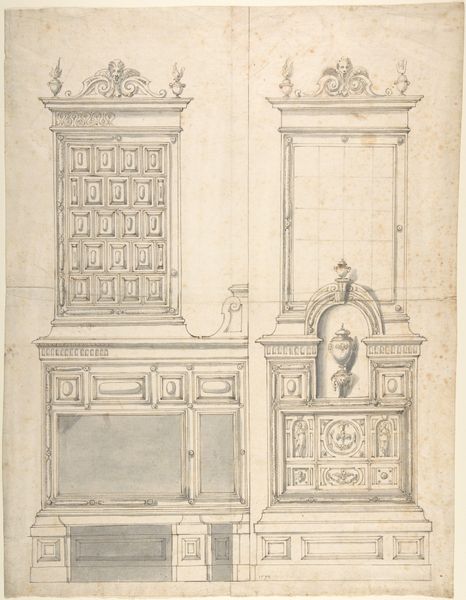
drawing, print, paper, ink, pencil, architecture
#
portrait
#
drawing
#
muted colour palette
# print
#
light earthy tone
#
paper
#
form
#
11_renaissance
#
ink
#
geometric
#
classicism
#
pencil
#
line
#
cityscape
#
italian-renaissance
#
architecture
Dimensions: sheet: 8 3/4 x 16 1/8 in. (22.3 x 41 cm)
Copyright: Public Domain
Curator: This is a 16th-century ink and pencil drawing titled "Project for Interior Wall with Fireplace," residing here at the Metropolitan Museum of Art. Editor: My initial reaction is a feeling of poised austerity. The muted tones and strict geometry impart a sense of restrained power—but there’s a strong undercurrent of potential warmth, literally represented by the fireplace, awaiting activation. Curator: Absolutely, I observe how line operates both delineatively and decoratively here. The precise linework constructs the architecture and lends itself to ornamental flourishes, such as the grotesque figures atop the mantle. Editor: Those grotesque figures and heraldic symbols above the fireplace are markers of status and dynastic power, meant to legitimize the owner. Beyond the form, what this says is ‘we are cultured’ and, simultaneously, ‘we are dominant.’ We should ask who inhabited and benefited from these spaces, and whose labor might have made the raw materials of the construction and interior possible. Curator: Those heraldic forms are indeed noteworthy. However, they operate as part of the composition within a rigorous classical structure. Think about the careful placement and symmetrical balance; those figures amplify the design. The drawing style itself takes inspiration from classical sources, showing the anonymous artist working within a loaded aesthetic framework. Editor: It's more than just aesthetic when it also operates politically. Think about how spaces are weaponized to exclude. This elevation and the planned fireplace behind it speak to the exclusionary practices, and ideologies concerning gender, race, and class that uphold certain people while excluding others. Curator: Of course, function intersects with its aesthetic form, yet to prioritize historical power is to erase some of the elegant balance this designer establishes between function, line and shape. Editor: Not to diminish its elegant balance—but this rendering offers us a lens into an elitist culture that excludes far more than it includes. Still, grappling with that, or interrogating who benefits from its representation of cultural expression matters most to me. Curator: Indeed. The work asks a myriad of important questions—we cannot help but impose present-day viewpoints to extract something more meaningful. Editor: Agreed, even through our differing vantage points!
Comments
No comments
Be the first to comment and join the conversation on the ultimate creative platform.

